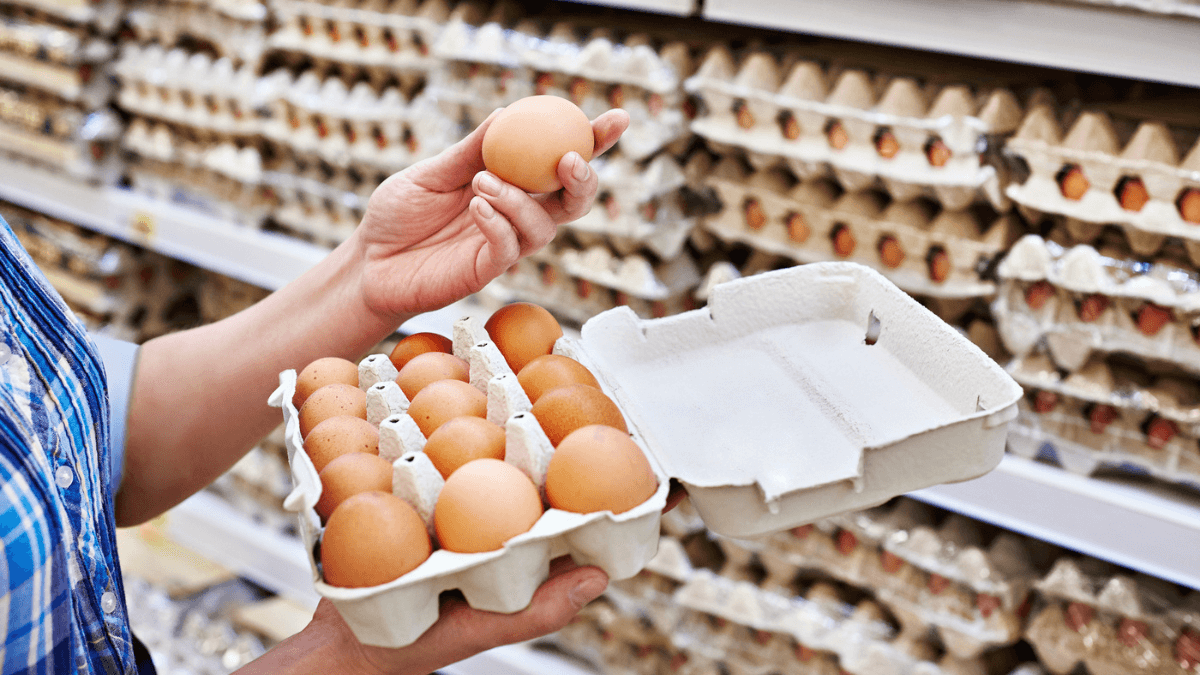**Why Are Eggs So Expensive? Understanding the Egg Price Surge**
Eggs have become a pricey commodity, leaving many wondering, **why are eggs so expensive?** Several factors contribute to this phenomenon, including increased demand, rising production costs, disease outbreaks, transportation expenses, and changing consumer preferences. Let’s delve into these reasons to understand the surge in egg prices.
—
### What is Eggflation?
The term *eggflation* is used in the United States to describe the recent sharp rise in egg prices. According to the U.S. Bureau of Labor Statistics (BLS), the cost of a dozen Grade A large eggs increased to $2.52, mainly due to the worst bird flu outbreak in U.S. history.
The pandemic and general inflation raised costs for chicken feed, labor, and transportation, all contributing to higher egg prices. While the impact of the bird flu has lessened and egg prices have dropped, they still haven’t returned to pre-pandemic levels.
—
### Current Egg Prices Across the USA
In the U.S., egg prices show significant regional variation in 2024. For example:
– **Hawaii** reported the highest prices at nearly $10 per dozen.
– **Missouri** had some of the lowest prices, around $4.24 per dozen.
According to the Consumer Price Index, a dozen large, Grade A eggs cost $3 nationwide in February 2024—an 8.4% increase compared to January of the same year. However, this price is still much lower than January 2023, when eggs sold for $4.82 per dozen.
—
### Global Egg Price Trends
Egg prices have surged globally, driven by the same bird flu epidemic and a substantial rise in chicken feed costs. Despite the decrease in U.S. prices toward the end of 2023, the global trend points toward higher costs due to ongoing supply chain issues and the lingering impacts of the pandemic.
Rising demand for fresh chicken eggs, especially due to upcoming occasions like Easter, has also contributed to price increases.
—
### Impact of Bird Flu on Egg Prices
In 2022, the bird flu outbreak devastated over 50 million birds, significantly reducing the population of egg-laying hens. This loss—accounting for about 5% of the laying hen population—drastically cut the egg supply, leading to a spike in prices.
The impact extended beyond the loss of birds; egg producers also faced soaring operational costs for disinfection and disease prevention. Combined with reduced supply, these factors compelled producers to hike prices. For instance, California saw the price for a dozen large eggs jump from $4.83 to $7.37 in just one year, mirroring similar trends across many states.
—
### Inflation and Production Costs
Inflation has been a significant driver in raising egg production costs. Specifically:
– **Chicken feed prices** – mainly grains like corn and soy – have increased due to global supply chain disruptions.
– **Labor and transportation costs** have also risen, putting additional pressure on producers.
These heightened production costs translate directly to increased retail prices, impacting consumers’ grocery bills.
—
### The Role of Middlemen and Corporate Distribution
An often overlooked factor in the high cost of eggs is the role of middlemen or corporate distributors. These entities bridge the gap between farmers and retailers but add layers of costs like transportation, warehousing, and logistics.
Due to inflationary pressures, these costs have spiked, increasing the final price consumers pay. Jeff Smith, co-owner of Cackle Hatchery in Missouri, told the New York Times that rising labor and equipment costs, combined with strong demand for eggs, have strained their operations.
Moreover, large distributors and retailers may mark up prices under the guise of inflation to increase their profit margins. An analysis by the U.S. House Subcommittee on Economic and Consumer Policy suggests this practice can inflate consumer prices significantly, beyond actual production and logistical costs.
—
### The Russo-Ukrainian War and Its Effects
The ongoing Russo-Ukrainian war has disrupted the global supply of grains like corn and soy—critical ingredients in chicken feed. Europe was a major supplier of these grains before the conflict.
As a result, chicken feed costs have surged, forcing poultry farmers worldwide to spend more on egg production. This increased cost passes along to consumers in the form of higher egg prices, demonstrating how geopolitical events can affect everyday market goods.
—
### Strong Seasonal Consumer Demand
Egg prices typically rise each year around Easter due to increased consumer demand. When supply cannot fully meet this surge in demand, prices naturally increase.
This seasonal price hike impacts not just holiday celebrations (like Easter egg dyeing) but also regular consumers who may find their household grocery bills strained.
—
### Will Egg Prices Go Down Soon?
Good news for consumers: fresh egg prices are finally dropping. Recent statistics indicate a significant decline—about 32%—in the price of a dozen Grade A large chicken eggs. This decrease is mainly due to recovery following last year’s bird flu outbreak, which had drastically reduced egg-laying hen populations.
With more hens available and eggs on the market, prices are normalizing. Wholesale egg prices have also sharply declined, nearly 80% from their peak, now just over $1 per dozen.
This trend suggests consumers can expect lower store prices soon. However, the degree to which these wholesale price drops will reflect retail savings remains unclear, as retailers ultimately set shelf prices. Despite wholesale prices falling below $1, retail price reductions may not be immediate or as substantial.
—
### Frequently Asked Questions
**Q: Why are eggs so expensive?**
A: Egg prices are high due to multiple factors—bird flu outbreaks that reduced laying hen populations, inflation raising production and feed costs, transportation expenses, and increased consumer demand.
**Q: Why is there a shortage of eggs?**
A: The bird flu outbreak led to the culling of millions of egg-laying hens, drastically reducing the egg supply and causing shortages.
**Q: Which country has the most expensive eggs?**
A: According to Global Product Prices, New Zealand had the most expensive eggs in 2024, with prices reaching $6.93 per dozen.
**Q: Why are some eggs cheaper?**
A: Prices fluctuate based on supply and demand. When supply increases or demand decreases, egg prices can fall. For example, prices tend to drop after Easter when demand subsides.
—
### Conclusion
The rising cost of eggs can be attributed to a complex mix of factors—including disease outbreaks, inflation, supply chain disruptions, geopolitical events, and shifting consumer demand. Understanding these dynamics helps explain why this breakfast staple carries a higher price tag today.
—
**Related Reads:**
* [How Bird Flu Affected Global Poultry Markets](#)
* [Inflation and Its Impact on Food Prices](#)
* [The Economics Behind Seasonal Grocery Shopping](#)
https://radicalfire.com/why-are-eggs-so-expensive/


